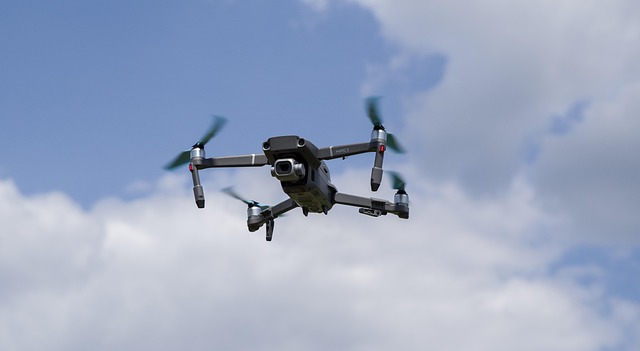Exploring How Drones Are Used at Home in 2025
As we step into 2025, drones have become an integral part of our daily lives, revolutionizing the way we interact with our homes and surroundings. These compact flying machines have evolved from novelty gadgets to practical tools that enhance our living experiences in numerous ways. From capturing breathtaking aerial photographs to streamlining home maintenance tasks, drones have found their place in modern smart homes. Let's delve into the world of domestic drones and explore their various applications, safety considerations, and the features that make them indispensable for homeowners in 2025.

What safety features should homeowners know about drones?
In 2025, drone safety has become paramount, with manufacturers incorporating advanced features to ensure responsible usage. Collision avoidance systems have become standard, utilizing a combination of sensors and AI to prevent accidental impacts with obstacles or people. Geofencing technology restricts drones from entering prohibited areas, such as airports or government buildings, ensuring compliance with local regulations.
Another crucial safety feature is the automatic return-to-home function, which brings the drone back to its takeoff point if the battery runs low or connection is lost. Additionally, many drones now come equipped with built-in ADS-B receivers, allowing them to detect and avoid nearby aircraft, further enhancing airspace safety.
What features make drones beginner-friendly in 2025?
For those new to drone piloting, manufacturers have made significant strides in creating user-friendly models. One of the most notable advancements is the integration of AI-assisted flight modes, which allow drones to autonomously navigate and capture footage with minimal input from the user. This feature is particularly helpful for beginners who may struggle with manual controls.
Voice command capabilities have also become commonplace, enabling users to control their drones through simple verbal instructions. Improved stabilization technology ensures smooth footage even in windy conditions, while enhanced battery life allows for longer flight times, giving novice pilots more time to practice and explore.
How do compact drones fit into modern smart home lifestyles?
Compact drones have seamlessly integrated into the smart home ecosystem of 2025. These miniature flying assistants can perform a variety of tasks, from monitoring home security to assisting with household chores. Many models now come with docking stations that double as charging ports, allowing them to remain on standby for immediate deployment when needed.
Smart home integration allows drones to communicate with other devices, such as thermostats and lighting systems. For instance, a drone can perform a quick indoor flight to check if lights have been left on or adjust the temperature in specific rooms. Some advanced models even feature robotic arms, enabling them to perform simple tasks like retrieving small objects or activating switches.
What are everyday uses for drones in home photography?
Drones have transformed home photography, offering perspectives that were once impossible to achieve without professional equipment. In 2025, high-resolution cameras with advanced image stabilization have become standard features, allowing homeowners to capture stunning aerial shots of their properties and surroundings.
Real estate photography has particularly benefited from drone technology, with homeowners able to showcase their properties from unique angles. Indoor drones equipped with obstacle avoidance systems can navigate through rooms, capturing immersive 360-degree tours that are perfect for virtual home showings or personal documentation.
How are drones used for home monitoring and security?
Home security has been revolutionized by the integration of drones. In 2025, many security systems include drones that can autonomously patrol the perimeter of a property, using thermal imaging and motion detection to identify potential threats. These drones can send real-time alerts to homeowners’ smartphones and even follow intruders while maintaining a safe distance.
For large properties, drones offer an efficient way to monitor fences, outbuildings, and vast areas of land. They can also be used to check on pets or livestock, ensuring their safety and well-being when owners are away from home.
What hobbies have emerged around home drone use?
The accessibility and versatility of drones have given rise to new hobbies and recreational activities centered around home use. Drone racing has become a popular pastime, with enthusiasts setting up obstacle courses in their backyards or participating in local competitions. First-person view (FPV) flying, where pilots wear goggles that display a live feed from the drone’s camera, offers an immersive experience that feels like virtual reality.
Aerial gardening has also emerged as a unique hobby, with specialized drones capable of planting seeds, watering plants, and even pruning trees in hard-to-reach areas. This has allowed homeowners to maintain elaborate gardens with less physical effort and greater precision.
As we embrace the drone-enhanced lifestyle of 2025, it’s clear that these versatile devices have become much more than just flying cameras. They’ve evolved into intelligent assistants that enhance our home lives in countless ways, from improving security to simplifying tasks and offering new forms of entertainment. As technology continues to advance, we can only imagine how drones will further integrate into our domestic routines, making our homes smarter, safer, and more efficient.




